Beijing is one of the best places in China to start your China tour, as it has flights from and to almost every corner of the world. In this 12 days China heritage tour from Beijing, you will start with visiting the 600-year-old Forbidden City, the world’s longest defensive project-the Great Wall in Beijing. Then you will take a bullet train from Beijing to Pingyao, and visit one of the Four Great Ancient Towns in China-the Ancient City of Pingyao. Next, you will travel to Xi’an, and find the trace of history in this ancient capital of 13 dynasties. Upon arrival in your final destination, Shanghai, it will feel like you are pulled into a new era. This modern scene is the heritage of the new China! Walking along the Bund, you will realize how this country has evolved in the past decades. Stop hesitating and join us on this best tour from Beijing.

Welcome to Beijing, the capital of China! Your wonderful China 12-day tour will start here. Our tour guide will hold your name sign and wait for you at the airport, and then the guide will transfer you to the hotel and then you will have a nice rest.
Today, your 12-day China tour begins. Beijing is the capital of China and it also serves as an ancient city with a history of more than three thousand years. There are 92 comprehensive higher education institutions in Beijing, including Peking University, Tsinghua University, and other famous universities. Beijing boasts the most world heritage sites comparing with other cities. It has more than 200 tourist attractions open to the outside world, including the Forbidden City, the Temple of Heaven, the Summer Palace... It is an excellent resort for you to travel around in China.
This morning your tour will start from Tian’anmen Square, located on the south side of Chang’an Avenue, and on the traditional central axis of Beijing. Tian’anmen Square is the largest city square in the world today.It covers an area of 440,000 square meters and can accommodate 1 million people for grand gatherings. Tian’anmen Square witnessed countless major political and historical events of the Chinese people. Every morning and evening, the flag-raising and lowering ceremonies are held in Tian’anmen Square. For those who are new to Beijing, watching a flag-raising ceremony is a must. Many people are watching the flag-raising ceremony early in the morning, so be sure to go out early.
After the visit of the Tian’anmen Gate, you will enter the Forbidden City (closed each Monday) through the Meridian Gate. Most tourists regard the Forbidden City as a must-see, so it deserves a visit. The Forbidden City, located in the center of Beijing’s central axis, is also known as the imperial palace of the Ming (1368-1644) and Qing (1636-1912) dynasties, and it is also a symbol of ancient China. Once you enter the high-walled courtyard, you will truly feel its glory. The long history has left large-scale precious buildings and countless cultural relics here. It covers an area of about 720,000 square meters and a building area of about 150,000 square meters. The Forbidden City embraces more than 70 large and small palaces and more than 9,000 houses. The Forbidden City is one of the best-preserved ancient wooden buildings in the world, and it is listed as a “World Cultural Heritage” by UNESCO.
Lunch will be in a local restaurant, and then you will visit the Summer Palace. The Summer Palace which was listed in the World Heritage List was a royal garden during the Qing Dynasty and was known as the “Royal Garden Museum”. It is located in the western suburb of Beijing, with a coverage area of about 290 hectares. It is adjacent to the Old Summer Palace, which is also known as Yuanming Yuan. On March 4, 1961, the Summer Palace was recognized as one of the first batch of national key cultural relics protection units. Together with the Chengde Mountain Resort, Humble Administrator’s Garden, and Lingering Gardens announced at the same time, it was named China’s Four Famous Gardens. On May 8, 2007, the Summer Palace was officially approved by the National Tourism Administration as a national 5A-level tourist attraction. The China World Record Association selected it as the largest surviving royal garden in China in 2009.
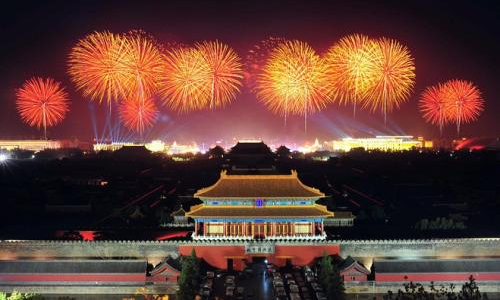
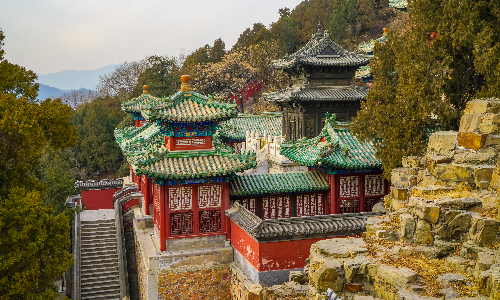
This morning, your guide will drive you for about 1 hour and 55 KM towards the northwest to visit the Ding Tomb of the Ming Tombs, which are the tombs of 13 emperors of the Ming Dynasty. The Ming Tombs are located at the foot of Tianshou Mountain in Changping District, Beijing, with a total area of more than 120 square kilometers. The Ming Tombs were built between 1409 to 1645. In 2011, the National Tourism Administration approved the Ming Tombs Scenic Area as a national 5A tourist attraction. The Ding Tomb is the tomb of Emperor Wanli, the thirteenth emperor of the Ming Dynasty. It is currently the only excavated underground palace among the Ming Tombs.
After lunch, we will visit the Great Wall. As one of the ten wonders of the world, the Great Wall is an ancient defense project with the longest construction time and it also had the largest engineering volume in China. It has a total length of 21196.18 kilometers. Mao Zedong, the first chairman of the People’s Republic of China, once said that he who does not reach the Great Wall is no true man. Therefore, the Great Wall deserves every one of you to visit. Mutianyu Great Wall serves as the essence of the Great Wall constructed in the Ming Dynasty. The walls of the Mutianyu Great Wall remain intact, which better reflects the ancient charm of the Great Wall. Many tourist facilities and projects have been developed in the scenic area, forming an organic combination of Great Wall culture and sports, fitness, and entertainment. Former British Prime Minister Major, former US President Clinton, and many other foreign leaders have visited and thought highly of this place.
On the way back to Beijing, we will have a photo stop at Bird’s Nest and Water Cube, two important venues for the 2008 Olympics Games.

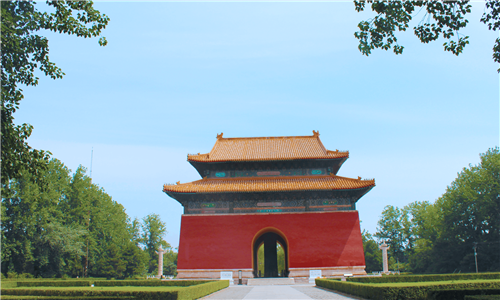
Breakfast will be in the hotel and after this, we will come to visit the Temple of Heaven. The Temple of Heaven serves as the largest sacrificial building complex in the world, with a coverage area of about 2.73 million square meters. It also serves as the architectural masterpiece of wood construction in China. The temple is surrounded by two layers of walls which divide it into two parts: the inner enclosure and outer enclosure. The Temple of Heaven was first built in 1420 so that the emperors of the Ming and Qing Dynasties can worship heaven and pray for harvest. The temple has a reputation for its rigorous architectural layout, exclusive architectural structure, and grandeur architectural decoration. In 1998, it was recognized as a world cultural heritage by UNESCO. On May 8, 2007, the National Tourism Administration officially approved it as a national 5A tourist attraction.
After visiting the Temple of Heaven, you can walk around the Hutong in Beijing. Hutong refers to the relatively small streets between the main streets in Beijing. It boasts a history of more than 700 years. Therefore, Beijing Hutong is a witness of the long history in Beijing, and it can reflect the development of Beijing. Beijing hutongs are not only the main arteries of transportation but also the places where ordinary people live. It is a significant stage for the development and evolution of Beijing’s history and culture. It records the changes in Beijing and the appearance of the times. In Beijing, we often see rickshawscarrying tourists around Hutongs. Viewing the scenery of Beijing Hutongs, you will surely have a feeling of the rich cultural atmosphere of Beijing Hutong residents.
After having lunch, we will continue to visit the Confucian Temple. Located on Guozijian Street, the Confucian Temple was built in 1302 and covers an area of 22,000 square meters. It is a place for worshipping Confucius during the Yuan Dynasty (1271-1368), Ming Dynasty (1368-1644), and Qing Dynasty (1644 -1912). After 700 years of historical and cultural accumulation, the Confucian Temple has left many cultural relics and material cultural heritage. As a place where Confucius culture gathers and accumulates, the Confucian Temple has become an important historical material for the further study of Confucianism. If you visit here, you can feel the charm of ancient Chinese literature and art. In 2010, Beijing Confucian Temple wasrated as national 4A-level tourist attractions.
Then you will visit the Lama Temple. Lama Temple is the largest Tibetan Buddhist temple in Beijing. The Lama Temple faces south and covers an area of 66,400 square meters. Its architectural style is unique, integrating the architectural art of various ethnic groups such as Han, Manchu, and Mongolian. So, you can feel the architectural styles of different ethnic groups in China here. If you are a Buddhist believer, this will be a must-visit place for you in Beijing. Here you can not only visit Buddhist relics such as Buddha statues and Sanskrit but burn incense and pray for blessings as well. In 1983, the State Council designated the Lama Temple as a key national Buddhist temple in the Han area.

 Pingyao
Pingyao This morning, you will say goodbye to Beijing and head to Pingyao. You will take the estimated train G627 08:05/12:03 to Pingyao. After arrival in Pingyao, your Pingyao guide will pick you up at the railway station and transfer you to see the Pingyao Ancient Town. Pingyao is a major cultural relic center in Shanxi Province, with more than 300 historic sites.
Firstly, you will enjoy the Ancient City Wall. The Ancient City Wall is one of the most complete existing county-level city walls in China. It was expanded and rebuilt in 1370. The Ancient City Wall is in the shape of a square and with a circumference of 6.2 kilometers. It is large in scale and well-preserved. It has high research value and cultural relic value in ancient military defense and construction technology. It is one of the four most intact ancient city walls in China. In 1997, Pingyao Ancient Town, including the Ancient City Wall, was included in the World Heritage List.
Then you will come to visit the Rishengchang Former Bank. Rishengchang Former Bank generally refers to the China Draft Bank Museum, covering an area of over 1,900 square meters and a building area of more than 2,400 square meters. It was such a small courtyard, which pioneered the Chinese national banking industry and once manipulated the economic lifeline of the entire Qing Dynasty in the 19th century. The Rishengchang Former Bank is China’s first private financial institution covering a wide range of services regarding deposits, lending, and remittance service. It preserves many historical materials, enabling you to truly feel the development history of finance and banking in China.
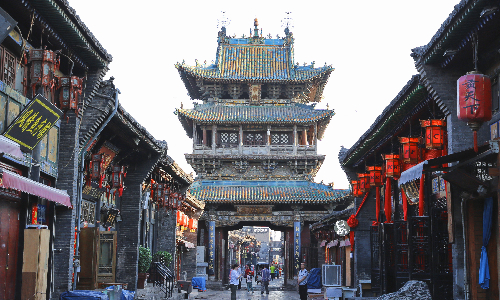
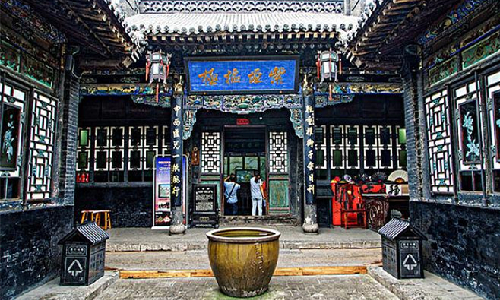
After breakfast, you will visit the Wang Family Courtyard, which is located in Jingsheng Town, a famous Chinese historical and cultural town in Shanxi Province. It is 35 kilometers away from Pingyao in the southwest, and it takes about 1 hour to drive there. The Wang Family Courtyard is also regarded as an architectural art museum with traditional cultural characteristics.It took over 300 years for the Wang Family to build this courtyard. The architectural decoration of the courtyard embodies the sturdy and practical architectural features of the ancient northern areas of China. Many films and televisions in China were shot here. It is also a 4A-level scenic spot. In 2006, the Wang Family Courtyard was listed as a National Key Cultural Relics Protection Unit by the State Council.
After lunch, you will move on to the Zhangbi Ancient Castle. The castle is located in Zhangbi Village, Jiexiu City, Shanxi Province. It covers an area of only 0.12 square kilometers, but it has a complete urban form and a military defense function. Based on traditional Chinese ancient astrology and geomancy concepts, the castle was built. Therefore, Zhangbi Ancient Castle is also known as the first village of Chinese astrology. It is a collection of rich and diverse cultural relics. It is a relatively intact pocket castle in China that integrates military, housing, production, astrology, and religious activities. Most experts presume that Zhangbi Ancient Castle boasts a history of more than 1,600 years. It has successively won the titles of famous historical and cultural villages in China, national key cultural relics protection units, top ten new scenic spots in Shanxi,and others.
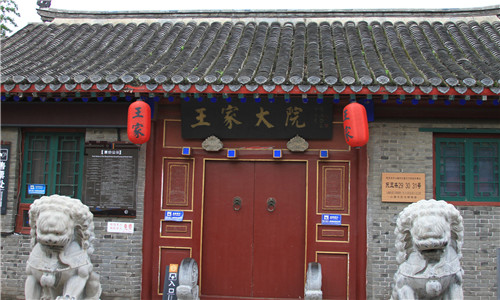
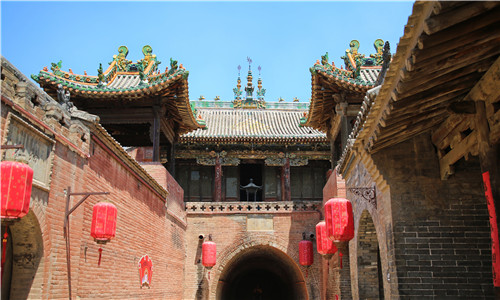
 Xi’an
Xi’an After breakfast, you will visit the Shuanglin Temple. This temple complex covers an area of about 15,000 square meters and it is a Buddhist temple with a long history. The Chinese scholar tree of the Tang Dynasty (618 - 907), the stele of the Northern Song Dynasty (960 - 1127), the bell of the Ming Dynasty, the ancient buildings, the colored sculptures, and the murals in the temple are rare treasures. More than 2,000 painted clay sculptures in the temple are even more commendable. These treasures have inherited the fine tradition of ancient-colored sculptures in China, characterized in a highly realistic style. These colorful sculptures are preserved intact to this day, which is a great blessing in art history. As one of the national key Buddhist temples in the Han area, the Shuanglin Temple is also included in the third batch of national key cultural relics protection units and is a national AAAA-level tourist attraction. In 1997, it was listed as an important part of the ancient city of Pingyao ofthe world cultural heritage list.
In the afternoon, your tour in Shanxi Province is about to end, and you will be transferred to the railway station and take the estimated train D2519 13:18/16:26 to Xi’an. Your Xi’an guide will then transfer you to the hotel where you can have a good rest.
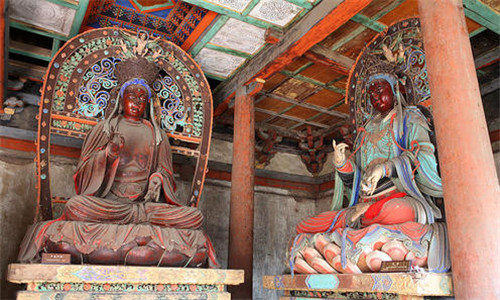

After breakfast, we will drive for about 1 hour and 40 kilometers to the northeast to visit the Terra Cotta Warriors and Horses Museum. It is considered the Eighth Wonder in the world. The Terracotta Warriors and Horses Museum is a relic museum built on the original site of the terracotta warriors and horses. It is known as one of the great discoveries in the archaeological history of the 20th century. About 7,000 terra cotta warriors, 100 chariots, and 100 warhorses have been excavated there. The terra cotta warriors and horses are of great value in art history. Every warrior was carved with different costumes and expressions. There are many kinds of hairstyles and gestures of every warrior. In January 2020, the Terra cotta Warriors and Horses Museum has received more than 80 million visitors from home and abroad. So, it deserves your visit.
After lunch, we will spend about 1 hour (about 45 kilometers) from the Terracotta Warriors and Horses Museumto go to the Big Wild Goose Pagoda. The Big Wild Goose Pagoda, a symbol of the ancient city Xi’an, is a well-preserved ancient building and a holy place for Buddhists to enjoy. It is located in the Da Ci’en Temple complex and attracts many visitors for its fame of Buddhist religion. The Big Wild Goose Pagoda, as the earliest and largest existing quartet-style brick pagoda in the Tang Dynasty, was introduced into the Central Plains with Buddhism and integrated into the Chinese culture. It is also a landmark building that crystallizes the wisdom of ancient China. You can also see the Da Ci’en Temple and the North Square of the Big Wild Goose Pagoda. Monk Xuanzang was the first abbot of Da Ci’en Temple, and he had always enjoyed translating the scriptures into Chinese there.
The ancient City Wall you will visit next refers to the Ming City Wall of Xi’an.It is the most complete ancient city wall in China, and one of the four best remaining ancient city walls in China. The city wall is located in the central area of Xi’an, with a height of 12 meters, a top width of 12 to 14 meters, and a bottom width of 15 to 18 meters. When you come to Xi’an, you must take a walk around the city wall, or choose to ride a bicycle on the wall to get a panoramic view of the ancient city of Xi’an.
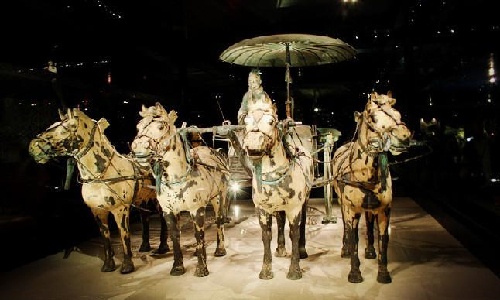
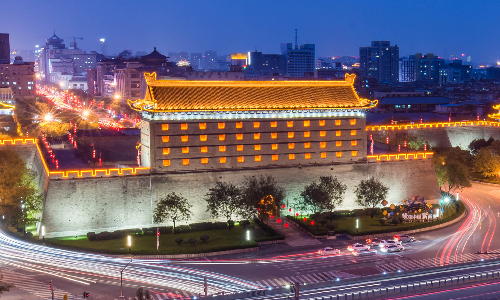
 Shanghai
Shanghai Today, you will say goodbye to Xi’an and head to Shanghai. We will transfer you to the airport and take the estimated flight FM9202 13:00/15:05 to Shanghai. Upon your arrival at Shanghai Pudongairport, your tour guide will meet you at the arrival hall, and then you will be transferred to your hotel.
After breakfast, you will come to visit the Yu Garden (closed each Monday), which is originally a private garden in the Ming Dynasty and boasts a history of more than 400 years. Yu Garden is the main place for sightseeing and holding various activitiessuch as flower shows and lantern festivals in Shanghai.
After the visit to the garden, you will come to the Shanghai Museum (closed each Monday). The Shanghai Museum, a large-scale ancient Chinese art museum,owns11 special halls, threemain exhibition halls, and an exhibition area of 2,800 square meters. There are nearly one million cultural relics in the museum, including 120,000 fine cultural relics, especially bronze ware, ceramics, calligraphy, and paintings. It has a collection of bronzes from all parts of China so that you can see cultural relics exhibitions from most regions of China only here.
After lunch, you will come to see the Shanghai Tower. The Shanghai Tower is a giant high-rise landmark skyscraper. Here you can visit the “Top of Shanghai Observatory” on floor 118. The fastest elevator in the world will take you to this 546-meters high observatory and you will have a 360 degrees bird’s-eye view of Shanghai’s renowned buildings, natural beauties, and everchanging sky. There are many gift shops on the 118th floor, selling a lot of souvenirs.
And then you will go to the Bund which is an important historical site and one of the landmarks of Shanghai. The Bund, known as the Bund World Architecture Exhibition Group, boasts 52 classical buildings with different styles.
Nanjing Road is one of the most prosperous commercial districts in the world. With the development of Nanjing East Road Pedestrian Street throughout the years, this commercial street has now become a veritable “China’s First Street”. As the first well-known commercial street formed after the opening of Shanghai, Nanjing Road is also the birthplace of Shanghai’s modern business. If you want to enjoy food, Nanjing Road Pedestrian Street is the one of the best choices for you. Here, you can enjoy fashionable restaurants and coffee shops of various brands. This street integrates shopping, tourism, leisure, business, and exhibition, bringing convenience to visitors to enjoy.
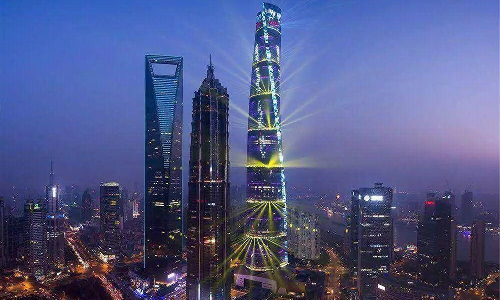
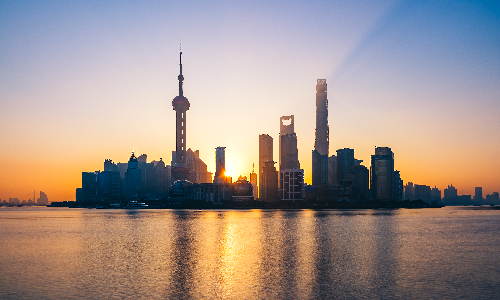
After breakfast, you will come to visit the Zhujiajiao Ancient Water Town. It will take a little over one hour (about 50 kilometers) towards the west from Shanghai city center to the water town.It is known as the “Venice of Shanghai”, and it is the best-preserved ancient water town in Shanghai. In 1991, it was named one of the four historical and cultural towns by the Shanghai Municipal Government. Here you can see the antique markets, architecture, and local customs of the water towns of the Ming and Qing Dynasties. There are also many places of interest and historical sites such as Fangsheng Bridge and Yixian Street, which exude a strong cultural charm. While you are standing on the Fangsheng Bridge and looking far away, the artistic conception of the water town is even more intense. You will also take a boat and enjoy the natural scenery on both sides.
After lunch, you will come to see the Jade Buddha Temple. The Jade Buddha Temple is an imitation of the Song Dynasty temple building, covering an area of about 11.6 acres. It got this name because the temple mainly enshrines the Jade Buddha, and it is also one of the top ten tourist attractions in Shanghai. The main buildings in the temple include the Great Compassion Hall, the Reclining Buddha Hall, and the Hall of the Holy Triad. In the Jade Buddha Temple, there are also many precious Buddhist classics and cultural relics. Almost all foreign guests visiting Shanghai willcome to the temple, including some government officials and famous people. For example, Nancy Reagon, wife of former US President Ronald Reagan visited the temple in 1984.
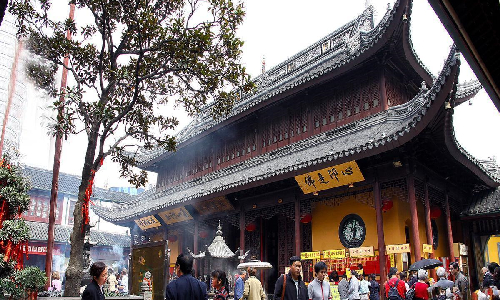
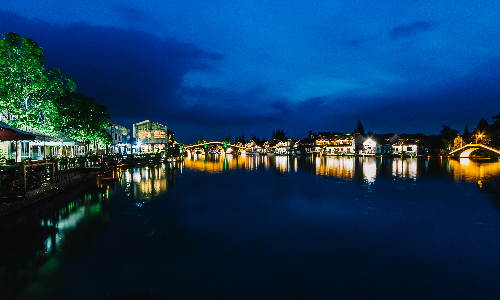
According to your international flight schedule, our guide will pick you up at the hotel and send you to the airport. If you are willing to experience the maglev train ride to Shanghai Pudong International Airport, we can also meet your needs. We hope you a pleasant homebound journey.
Author: Ami Hao
Proofreader: Liz Lee
| City | Five Star hotel list | Four Star hotel list |
|---|---|---|
| Beijing | Sunworld Dynasty Hotel Beijing Wangfujing | Sunworld Hotel Wangfujing |
| Pingyao | Pingyao Yide Hotel | Pingyao Dejuyuan Guesthouse |
| Xi'an | Tianyu Gloria Grand Hotel Xi'an | Sunworld Dynasty Hotel |
| Shanghai | Ocean Hotel Shanghai | Courtyard by Marriott Shanghai Central |
 |
![]() About your child or infant, please contact us for a discounted price.
About your child or infant, please contact us for a discounted price.



We started with a few days in Beijing & ended in Shanghai, from where we visited the Forbidden City and Great Wall. In between we visited Terra Cotta Warriors Museum, Panda Base, Shanghai Disneyland.

We had a wonderful holiday in China which will remain long in the memory. China is a breathtakingly beautiful country full of splendid temples and palaces, mountains and rivers, peaceful rural scenes and bustling shopping streets.
 QUICK ENQUIRY
QUICK ENQUIRY